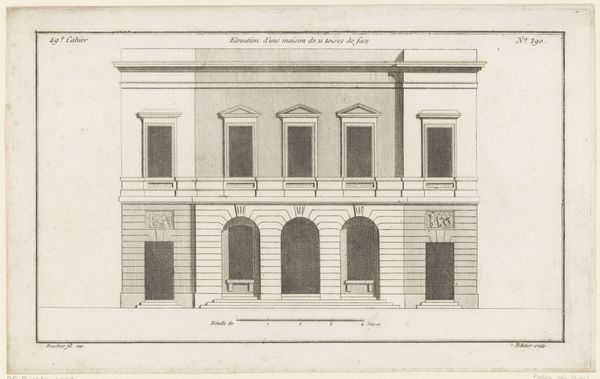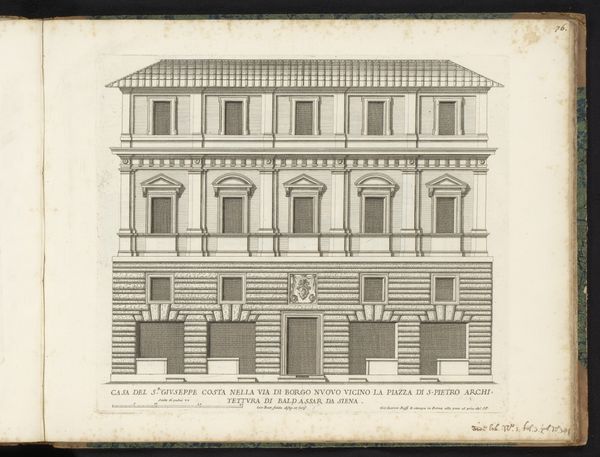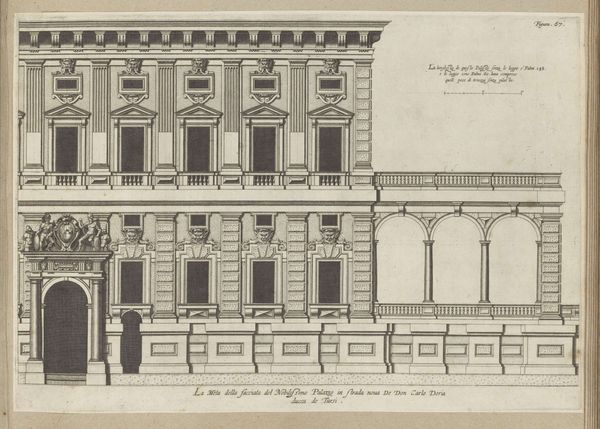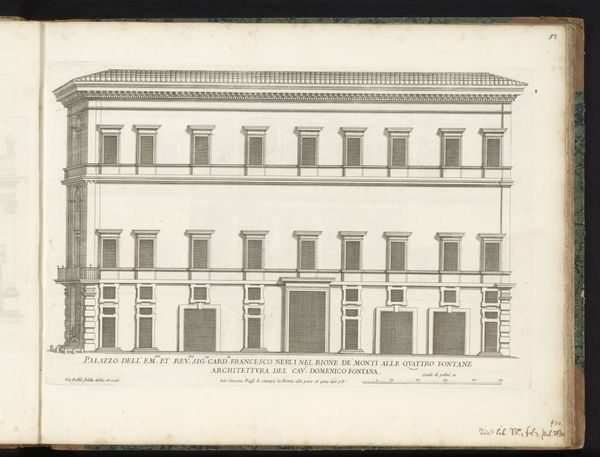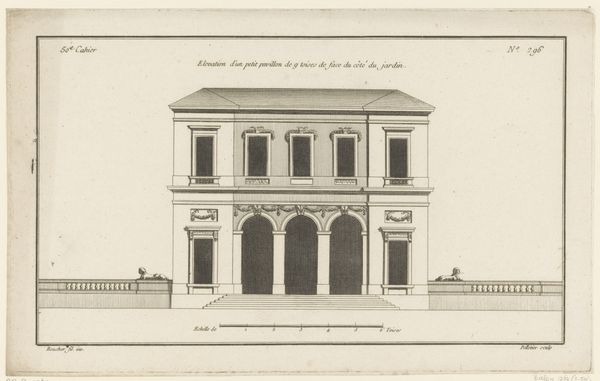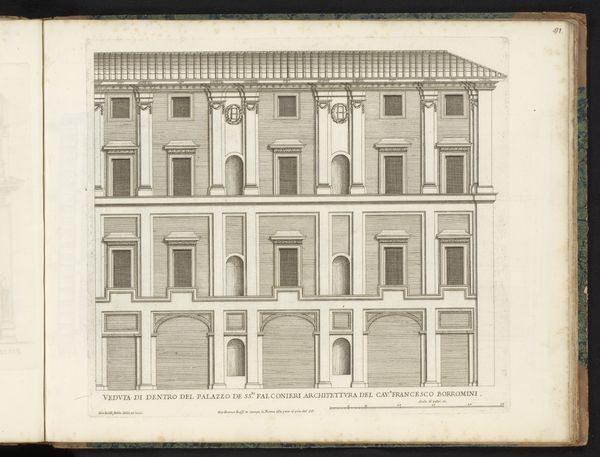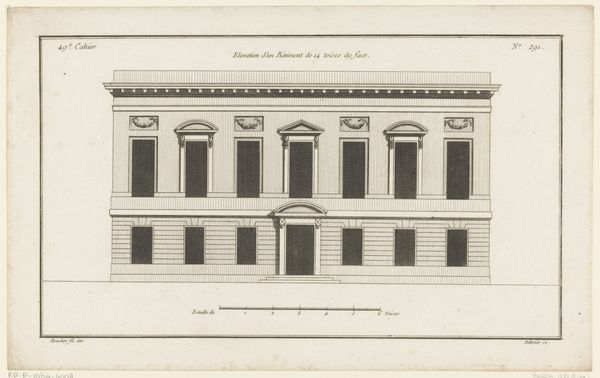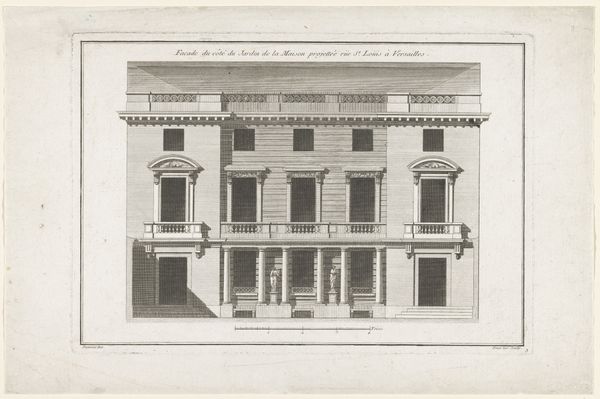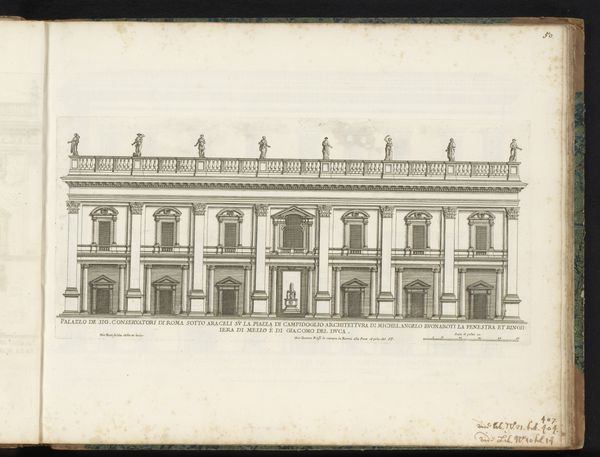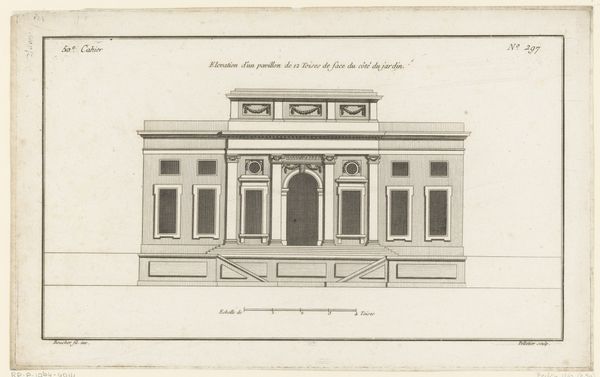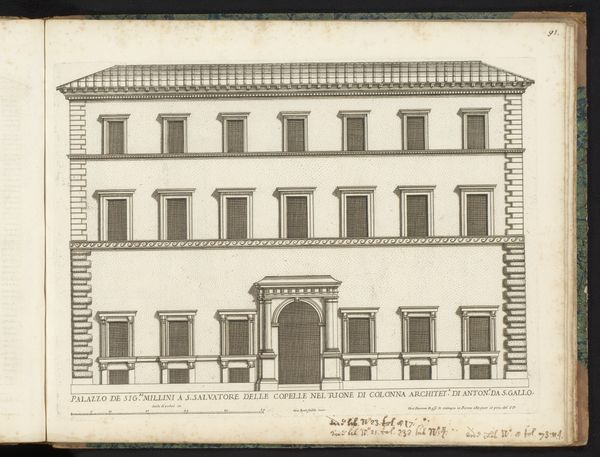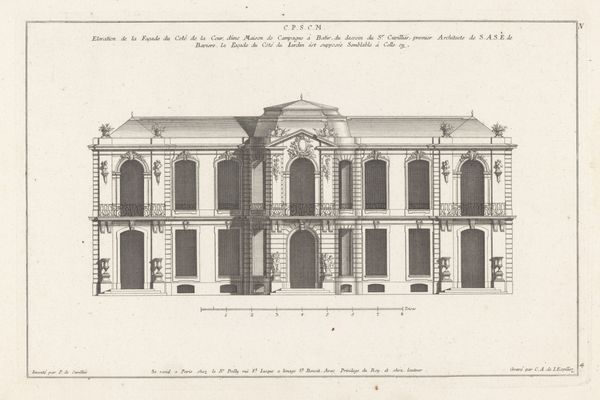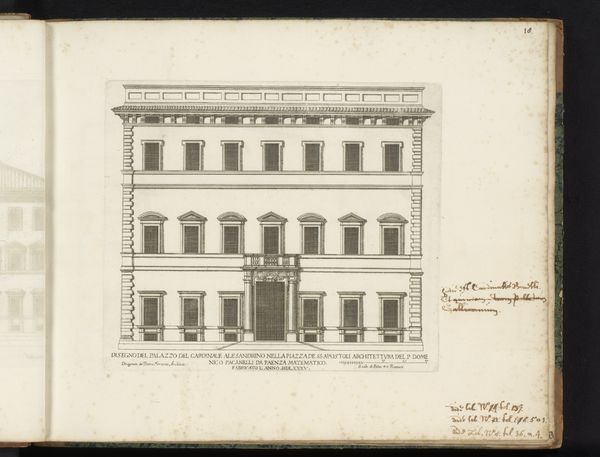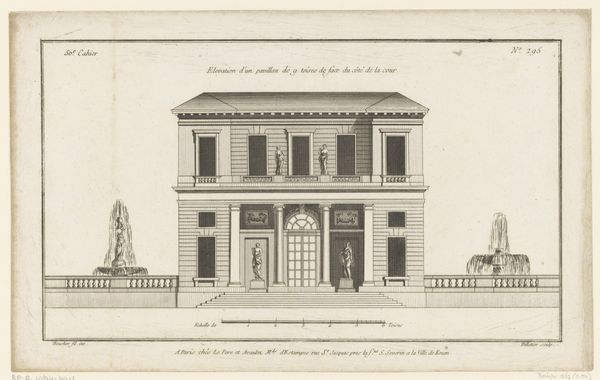
drawing, engraving, architecture
#
drawing
#
neoclacissism
#
form
#
line
#
cityscape
#
engraving
#
architecture
#
building
Dimensions: height 205 mm, width 329 mm
Copyright: Rijks Museum: Open Domain
Curator: Here we have Jean Pelletier's "Facade with Portal and Balconies," an engraving dating from the 1770s. Editor: My initial impression is one of strict order and calculated restraint. It feels…clinical, almost. Very symmetrical. Curator: Indeed. This is Neoclassicism distilled. Look at how Pelletier uses line to emphasize balance and form. Think about the socio-political context – the desire for order and reason in the face of the Ancien Régime's excesses. Architecture as a statement, projecting stability and control. Editor: Absolutely. And I wonder how the image itself, as a print, impacted its reception? Prints allowed architectural designs to be disseminated widely, influencing tastes and shaping the very fabric of cities. Were these designs aspirational, showing what could be, or reflective of a social reality? Curator: Aspirational, definitely. Neoclassicism, in its revival of classical values, became entwined with notions of citizenship and civic virtue. Buildings were designed not just as spaces to inhabit, but as symbols of power and societal values, perpetuating very particular cultural standards. Editor: And the symmetry you mentioned? Is that a celebration of rationality, or a stifling constraint imposed upon lived experience? We can ask what kind of society builds these facades and for whom are they erected? Curator: A complex question, for sure. The clean lines, devoid of excessive ornamentation, were a deliberate rejection of Rococo extravagance. Editor: True, but even this apparent simplicity speaks volumes about the social hierarchies present in art, about which tastes get legitimized. The architecture itself then participates in the naturalization of societal order. Curator: An important point to keep in mind. It reveals a desire for something immutable, enduring. It highlights how built structures both reflect and solidify socio-cultural beliefs. Editor: Well, seeing this facade has certainly made me think about how architectural representations aren’t neutral at all—they can shape and reinforce very definite societal power dynamics. Curator: And for me, it is a reminder to appreciate the architectural blueprint not just for what it visually communicates, but for what it implies about our enduring relationship with structure, control, and meaning.
Comments
No comments
Be the first to comment and join the conversation on the ultimate creative platform.
